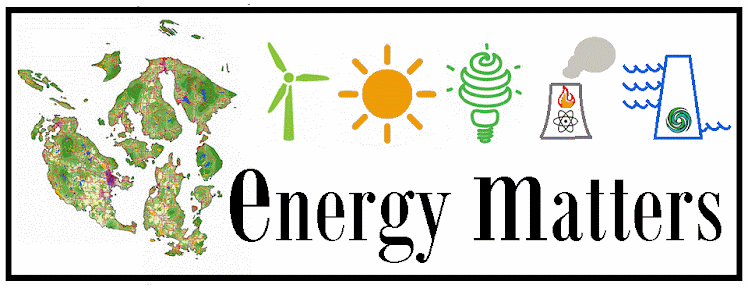An invitation to hackers, programmers, artists, energy geeks, and cultural creatives ...
Forgive my long missive, but I'd like to share a vision of a the electric "grid of the future". Perhaps some hackers and artists would be interested in building it. To utility engineers, the greatest constraint to significant deployment of renewable energy is that these sources are, by and large, intermittent. Some people see this as a fatal flaw with renewables. I don't. The problem, I believe, is that in the past 100 years consumers have become very disconnected from where electricity actually comes from and the relative abundance of electricity in real time. Utilities have been able to oblige because storable, dispatchable fossil fuel powered electricity has been relatively cheap. But we could have a very different system in which nudges to consumers modulate demand in response to supply.
Folks living on 'home power' off-grid type systems in which their homes are powered by sun or windpower are used to the idea that sometimes there is an abundance of electricity, and other times it is in short supply. When power is abundant, you do things like your laundry, or fire up the electric oven for cooking. In times of scarcity, you're careful to turn out the lights. Sometimes you need to go turn on the diesel generator (noisy, smelly, expensive to operate).
Similarly, farmers harvest when the sun is shining. When it's rainy, they do other things.
Utilities, increasingly, face the same reality of temporal changes in electricity abundance. Sometimes electricity is abundant. It was particularly so in spring of 2011 in BPA territory when winds in the Columbia Gorge were gusting and the snowmelt was significant. The price power power in Spring 2011 at the transmission level actually dipped below zero at times. But as a retail customer using this electricity, I had no clue of the abundance at the time. My light switches were mute.
Other times electricity is scarce -- think a cold, still night in the Pacific Northwest when many folks' electric heaters are turned on, or a hot, breezeless day in California when air conditioners are cranking.
What if, in every home that volunteered to do so, a high-tech electricity display device communicated, in an artistic and playful way, what the state of abundance/scarcity was in the grid? I'm imagining a web-connected display kind of like an iPad with pictures or videos that have high artistic content. The whole package could be set up so that many people could contribute artistic imagery along a theme. One inspiration is the Johnny Cash Project <http://www.thejohnnycashproject.com/> where tens of thousands of ordinary people have created thousands of versions of a moving music video.
This effort could be coupled with existing demand response programs that, for example, turn off people's water heaters in response to utility signals at times of peak load. And coupled with tariffs that encourage conservation in times of scarcity.
Users that were interested could, with a few taps, find out detailed real-time graphs of energy production and demand data, like this one maintained by BPA <http://transmission.bpa.gov/business/operations/wind/baltwg.aspx>.
This technology, in the homes and businesses of the willing, is the keystone, I think, towards a move towards a power system that provides for our needs (in times of scarcity) and our wants (in times of abundance) and facilitates high penetrations of renewable energy with no need to invent utility-scale storage.
Anybody up for the challenge? I'll bet our local utility, OPALCO, might be interested in a discussion about a beta roll-out...



I had a chance to attend a great webinar this morning on intermittency - take a look at http://www.civilsocietyinstitute.org/synapsereport/ ... Interestingly, the Pacific Northwest faces by far the greatest challenge with intermittency in a high renewables penetration scenario, and would have to import energy from elsewhere about 500 hours per year.
ReplyDeleteMy organization, the Solar Gardens Institute http://solargardens.org , has received a $2500 matching grant to help develop community solar projects in the San Juan Islands.